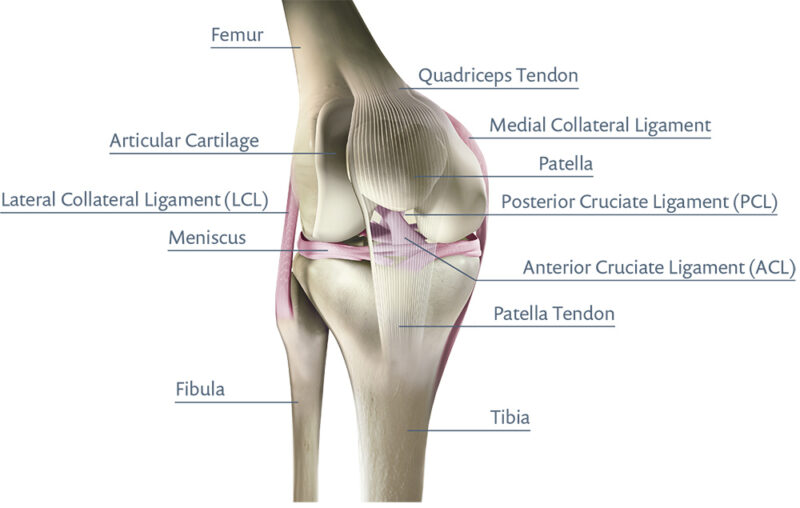Knee Ligament Reconstruction Explained
Your knee has four major ligaments – all of which can be torn and damaged. Dr Dan Fick explains some key facts about one option that could help fix them – knee ligament reconstruction surgery.
Knee ligament reconstruction surgery is a type of knee arthroscopy that aims to replace torn ligaments and restore knee stability and mobility if you have torn one of the main ligaments in your knee.
What Are Knee Ligaments?
Ligaments are strong bands of tissue that keep your joints in place. In the knee, the ligaments connect the thighbone (femur) and the shinbone (tibia). Your knee has 4 major ligaments – all of which can be torn and need repair.

Anterior cruciate ligament (ACL):
The ACL is the most common ligament that tends to get injured. It’s located in the centre of the knee and controls the rotation and forward movement of the shinbone. The ACL is often stretched and/or torn during a sudden twisting motion, so if you play sports such as football, basketball or skiing, you may be at risk of an ACL injury.
Posterior cruciate ligament (PCL):
This ligament in the centre of the knee controls backward movement of the shinbone. The PCL is also a common knee ligament to be injured, but this is usually as a result of sudden impact, such as a sports tackle or a car accident.
Medial collateral ligament (MCL):
This ligament helps to stabilise the inner knee. The MCL can be injured as a result of a blow, pressure or stress on the outside of the knee.
Lateral collateral ligament (LCL):
This ligament gives stability to the outer knee and could be damaged as a result of an injury that pushes the knee from the inside.
When Would I Need Ligament Reconstruction?
If you have torn or damaged your ligament, there are non-surgical options, such as physiotherapy, you can try before having knee ligament reconstruction. But if you’ve tried physiotherapy and still find that your knee gives way or affects your ability to play sports or get back to your normal activities, then knee ligament reconstruction could be the answer for you. We can discuss your treatment options when you come to see us.
What Happens During Knee Ligament Reconstruction Surgery?
The surgery to correct a torn knee ligament involves replacing the ligament with a piece of healthy tendon. Although tendons are different types of tissue to ligaments, they begin to act like ligaments once in place.
One type of surgery we can do is a tibial tubercle transfer, which is performed to treat certain knee conditions, particularly those related to patellar (kneecap) instability or malalignment. This procedure involves repositioning the attachment point of the patellar tendon on the tibia (shinbone) to improve the alignment and stability of the kneecap.
Dan makes an incision over the front of your knee to access the tibial tubercle, which is the bony prominence below the kneecap where the patellar tendon attaches to the tibia. The tibial tubercle is carefully cut, or osteotomised, allowing it to be moved to a new position, typically shifting it medially (towards the inside of the knee) to address patellar malalignment. The new position is often secured with usually 1 or 2 screws.
What Are the Benefits and Downsides of Knee Ligament Reconstruction?
The main benefit of the procedure is that your knee will be stable again and should not give way when you’re enjoying sports or other activities.
A potential risk of the surgery is that you may experience graft failure – although this affects only about 10% of people who have had the procedure. If this happens, you may need revision surgery to fix the ligament again.
What Is Recovery Like?
During recovery, expect to have 2 weeks of swelling and discomfort requiring pain relief. Avoid doing anything too strenuous for the first 4 weeks, and ensure you have plenty of rest, ice and elevation.
Listen to your knee and alter your activity and exercises according to how your knee responds. Weight-bearing and knee movement will be restricted initially, and you will need crutches to support your knee as you recover.

